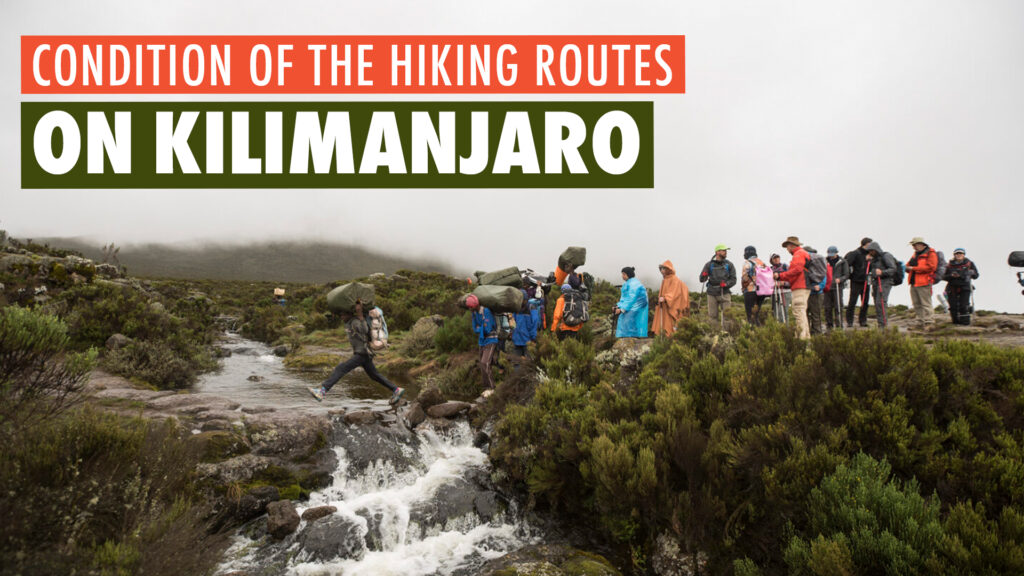
The paths on Mount Kilimanjaro are nicely laid out and taken care of. So, you’ll find them quite easy to navigate and not too strenuous. You don’t need any special climbing skills for our routes. There might be just a few spots where you’ll do a bit of hands-and-feet climbing, like on the Barranco Wall, but don’t worry, there’s no real risk of slipping off a cliff!
And hey, your guides will always be there to assist you if you come across any tricky spots. They’ve got your back!
The hiking routes on Kilimanjaro vary in terms of terrain, difficulty, and maintenance. Some are classic easy hiking trails, other parts (especially on the descent) are long stretches of scree, and even multiple hours of hiking on hard rock in a river bed.
- Marangu is one of the most popular routes due to its relative ease and shorter duration. The trail is well-maintained, and it is the only route with sleeping huts at the campsites.
- Known as the “Whiskey” route, Machame is a more challenging and scenic path. The trail can be steep and rocky in some sections, but it offers stunning views. It’s considered one of the most beautiful routes on Kilimanjaro.
- The Rongai Route approaches Kilimanjaro from the north, offering a unique perspective of the mountain. The trail is generally well-maintained, with a gradual ascent. It’s considered one of the quieter routes.
- The Northern Circuit Route is one of the longest routes and circles around the northern slopes of Kilimanjaro. It offers excellent acclimatization opportunities and takes you through diverse landscapes.
- The Western Breach Route is an advanced route that approaches the summit through the western breach. It’s considered the most challenging and involves some technical climbing. It requires a high level of fitness and mountaineering experience.
Remember, the condition of the routes can change over time due to factors like weather, erosion, and maintenance efforts. It’s important to choose a reputable tour operator with experienced guides who are familiar with the current conditions of your chosen route. Additionally, always check for any updates or changes before embarking on your climb.







